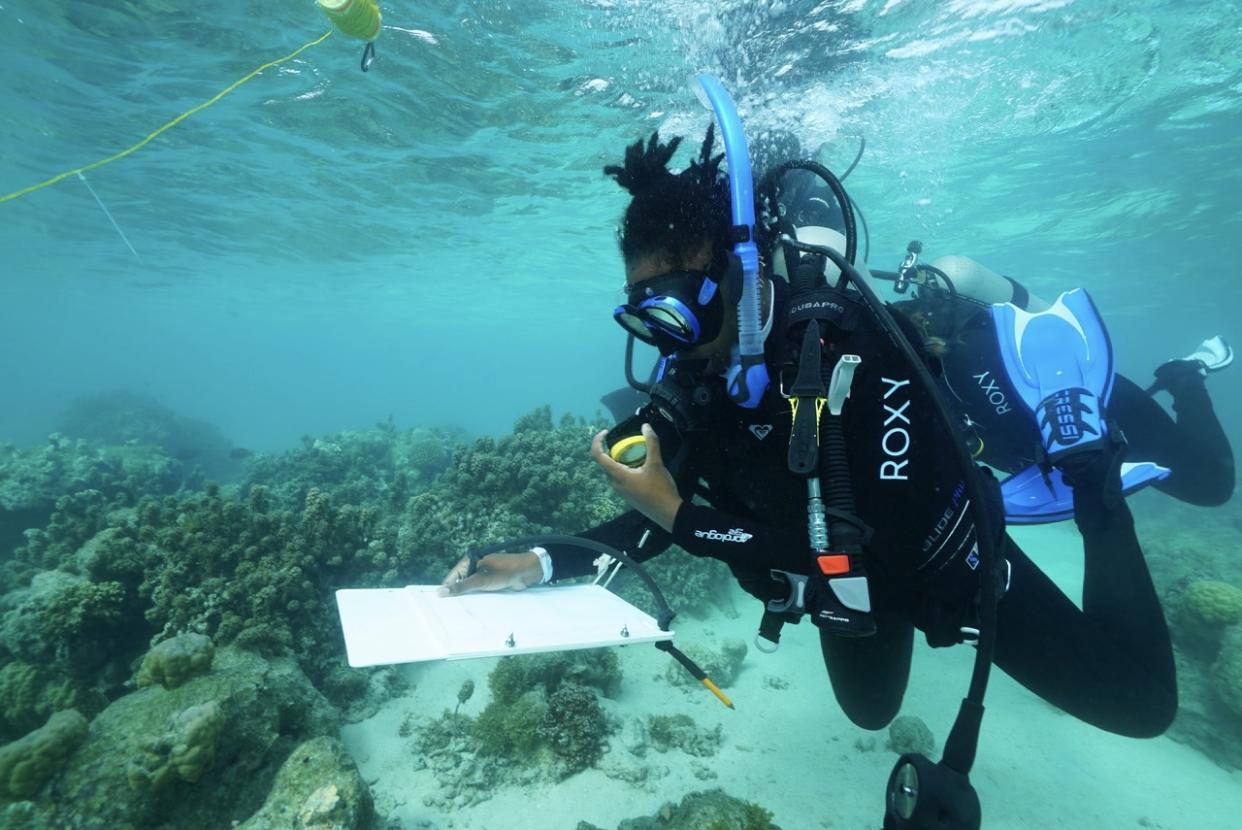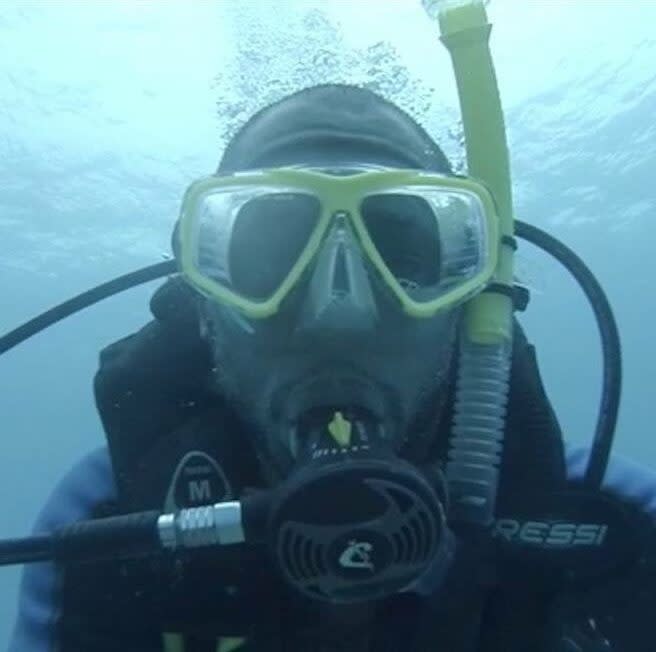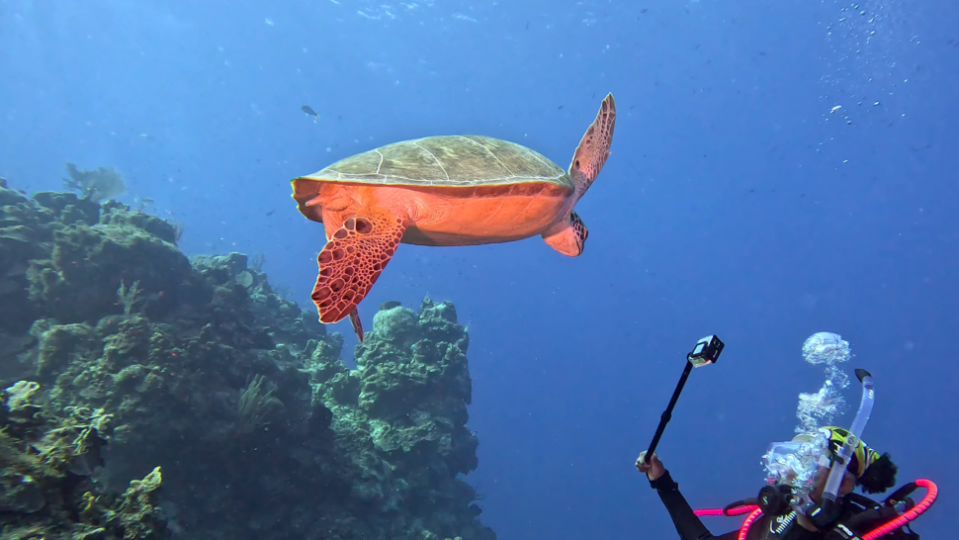Black Marine Biologists And Certified Divers Share Best Destinations For Scuba Diving and Snorkeling

Encountering a Black marine biologist, marine scientist, and even Black certified scuba divers is rare, even in 2024. Zippia data shows that only three percent of all marine biologists identify as Black. Meanwhile, Safina Center data reveals that Black people only account for five to eight percent of certified scuba divers worldwide.
Groups like Black in Marine Science (BIMS), the National Association of Black Scuba Divers (NABS), and Black Women in Ecology, Evolution, and Marine Science (BWEEMS) are living proof that Black people love the water and work in marine sciences—contrary to popular belief.
Travel Noire spoke to four industry professionals about the best scuba diving and snorkeling destinations and ways to protect the ocean and wildlife.
Dr. Tiara Moore – Founder/President of Black in Marine Science
Dr. Tiara Moore’s career in marine sciences happened by chance. She had a chance to travel to Costa Rica to sign up for a marine ecology course while an undergrad. She didn’t know at the time that trip would change her trajectory.
Moore was on track to become a pediatrician but wasn’t in love with seeing sick children. She fell in love with marine biology and obtained her master’s in Marine Science from Hampton University before receiving her doctorate.
She has since founded Black in Marine Science (BIMS), a growing community of Black marine scientists, who Dr. Moore says include people who care about the ocean. The nonprofit started with a tweet when Dr. Moore asked, “Where are all my Black marine scientists at?” That response is when Dr. Moore knew she needed to create a community within the industry.
BIMS now serves as a representation and a resource to amplify Black voices in marine science and inspire people who care about marine life.
When Dr. Moore is not getting ready to host the next event or educational show on YouTube, she’s out scuba diving. One of her favorite places is Silk Cayes in Belize.
“I live in Belize now that I fell in love,” she tells Travel Noire. “My partner and I love going on diving dates, especially to Silk Caye. I’ve been to a lot of places, and what I love about Silk Cayes is you don’t need a wetsuit, just a rash guard, and you can come close to sharks. Don’t worry. They’re nice sharks and won’t bother you.”
Andrea R. Williams – President, National Association of Black Scuba Divers (NABS)
Andrea Williams has been diving since the 1990s and spent years being used to be the only Black scuba diver. Around 2009, she was on a diving site in Dutch Springs, Pennsylvania, when she met Tony McNeal, the first president of NABS. McNeal noticed Williams didn’t have a pair of diving botties for the rough rocks in the water and offered hers. Williams realized McNeal was part of something larger going on that weekend because it was the first time she saw a significant number of Black divers and instructors. The Atlantic Rangers Scuba Club was hosting its annual family and friends weekend.
From then on, Williams, who says she’s a scientist who loves coral, has been involved ever since. In addition to serving as the current president of NABS, she’s the operations manager for Black Women in Ecology, Evolution, and Marine Sciences.
For Williams, Southeast Asia is the first place that comes to mind for great diving adventures.
“The diving was really nice in Thailand because I got to see quite a lot of marine life that you don’t get to see anywhere else,” she says. There were a good number of sharks and different types of fish that you don’t get to see in other parts of the world.”
After Thailand, Williams enjoys diving in the Pacific Ocean and The Indian Ocean.
“The great Pelagics are just wonderful to see in the Maldives,” she adds. “I saw whale sharks and manta rays and played hide-and-seek with an octopus. In Maui, I saw giant sea turtles up close, and the variety of coral was fascinating. It’s always warm, which is something I also love.”
Darrell Elcock – Certified Diver with Advanced Certification

Growing up in Tobago, Darrell has always been curious about water, but he didn’t start diving until 2016 after his co-workers inspired him.
“It started at work. Some of my coworkers were talking about scuba diving, and I said to them, ‘I want to do that.’”
He took a class, and the rest is history. Shortly after obtaining his first certification, he started diving in the Caribbean. He later went on to get an advanced certification to go deeper and explore shipwrecks.
Elcock says Florida and the Caribbean are great places for people with limited time.
“If you’re short on time, Florida is great for drift diving, especially if you don’t mind sharks,” he says. “The Bahamas is also a great place for diving. They have sharks, too, but they’re friendly. They won’t bite you.”
When it comes to Elcock’s dream destination, he says he looks forward to diving in Iceland’s Silfra fissure because there are some spaces below where you can dive between two continents and simultaneously touch North America and Europe.
“I’ll have to get to get certified in a dry suit for that one because the temperature can dip to below 0.”
Janelle Layton – Marine Biologist Student Studying The Impact of Climate Change on Fish

Janelle Layton is a full-time graduate student studying the impacts of climate change on different fisheries. Most of her research sites are in the Caribbean, where she’s studying the various grouper species, and she’s done some work on the Pacific Coast.
Layton was studying biology at Hampton University on the pre-med track. After taking some electives while studying, she realized she was more passionate about the environment and marine sciences.
“I’m a warm-water girl, so my favorite spots in the world are in the Caribbean, specifically the Cayman Islands,” she tells Travel Noire. This is where I study for a lot of my research.”
The Cayman Islands comprise three sister islands: Grand Cayman, Little Cayman, and Cayman Brac. Layton says Little Cayman is one of the best sites in the Caribbean.
“It has one of the best dive sites in the world, Bloody Bay Wall,” she says. “It’s beautiful. You see so much diversity, coral reefs, and different marine organisms all in one spot. You can see so much change while you’re there on that one dive.”
Another great diving location Layton recommends is French Polynesia.
“Most people go to the fancy islands, like Bora Bora and Tahiti, but the lesser-known island Mo’orea has beautiful dive sites as well,” she adds. “It’s very different wildlife because it’s in the Pacific Ocean. You will see sharks, sea turtles, different types of algae, and different fish species.”
Rounding Layton’s best-of list is right off the coast of Los Angeles, on Catalina Island. She says it’s the best domestic dive site, thanks to Kelp Forest.
“Kelp is a marine algae and creates a beautiful forest under the sea that you can go through. It feels like you’re going on a hike, but you’re underwater. There are many beautiful marine species, like the Garibaldi – California’s state fish.”
How To Protect The Ocean When Snorkeling and Scuba Diving
As part of her research, Layton has witnessed firsthand the impacts of climate change and human activity on the water. She says the best way to protect wildlife in the water is to simply leave it alone.
“Don’t touch anything. It looks really cool underwater, but the things we wear, including lotion and sunscreen, can harm marine species, and we don’t want to disrupt what’s already there.”
Mineral-based sunscreen is healthier for wildlife. Layton also says don’t forget to pack a reusable bottle to keep plastic out of waterways, which make their way to wildlife and threaten them.
Williams says scuba divers and snorkelers should familiarize themselves with the Professional Association of Diving Instructors (P.A.D.I)’s AWARE Initiative to learn how to protect the ocean.
“Snorkelers in particular, while they’re not the worst offenders, everyone at some point does something to the ocean to not help it, but be mindful of where they’re stepping because often, they think they’re stepping on rocks, but it’s brain coral,” says Williams. “Remember, it takes coral thousands of years to grow.”
She adds that another great way to protect the ocean and wildlife is to book scuba and snorkeling excursions with local companies that have the proper certification.

